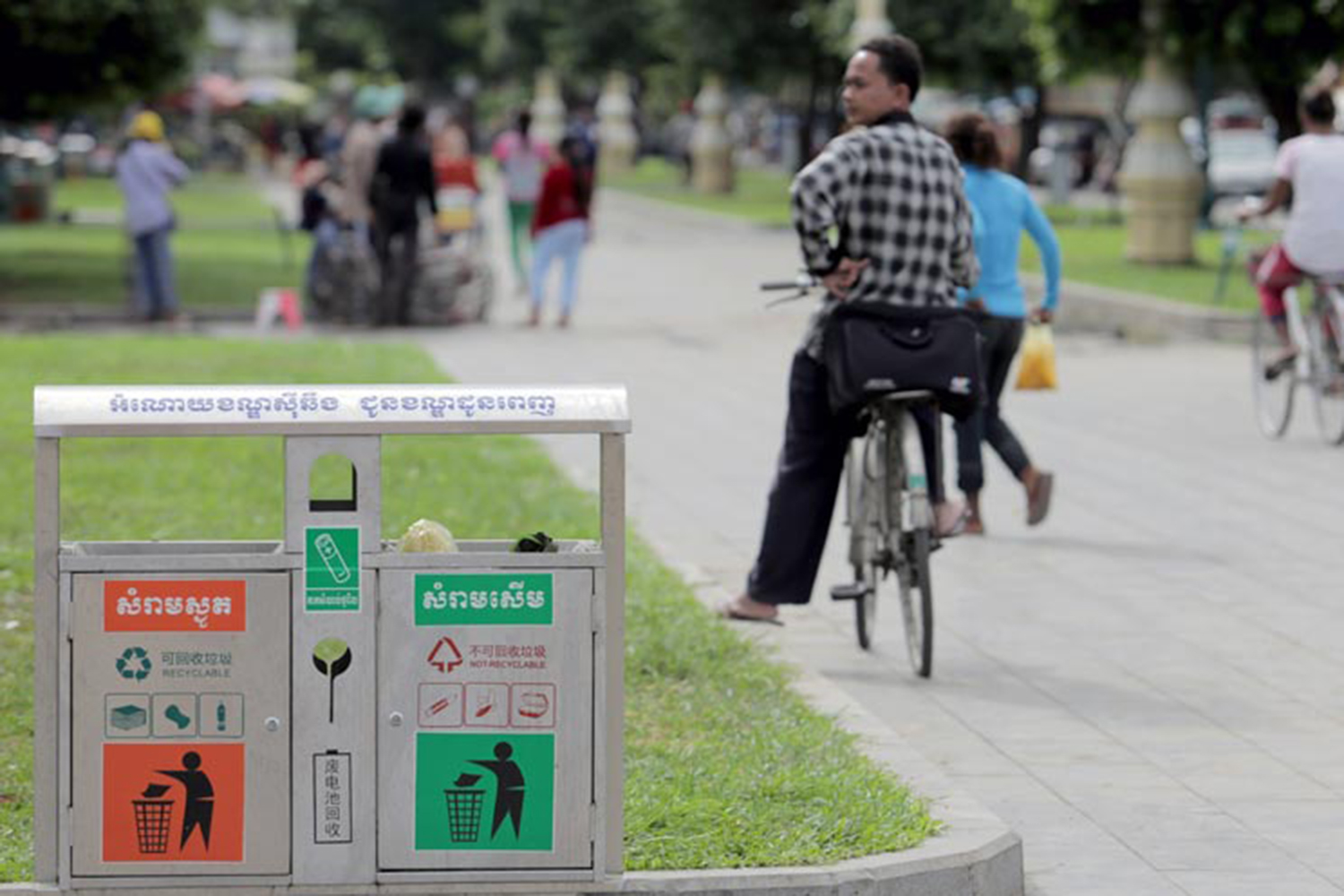
Climate risks and demand by Cambodia’s garment customers for international standard waste compliance are inevitably pushing the Kingdom towards a circular economy.
Global temperatures are expected to rise at a minimum of 1.5C beginning 2018, according to United Nations’ Intergovernmental Panel on Climate Change (IPCC) last year.
The report states that the depletion of natural resources will affect people, especially the poor, who depend on resources for their survival.
To avoid a climate catastrophe, the IPCC argued for the necessity of urgent action across the globe.
United Nations Development Program in Cambodia resident representative Nick Beresford says there ought to be ways to transform the way the economy operates and consumes resources.
The current economic model is linear, moving from extraction to production, consumption and disposal.
“By improving resource efficiency, promoting the use of renewable and clean energy, and the 4Rs (refuse, reuse, recycle and reduce), we can transfer to a non-waste based circular economy,” the Capital Cambodia quoted Beresford as saying.
A circular economy defines solid waste management where plastic pollution is reduced, renewable energy increased, and management of protected areas are improved.
“This is a revolutionary change in mindset. Wide adoption of circular economy models can significantly reduce the use of natural resources and energy, waste, greenhouse gas emission, and pollution,” he says.
Cambodia is at the beginning, exploring options to move towards a circular economy, first with waste management based on a project launched last March.
“It is a great effort for a small country like Cambodia to take the lead in promoting high-end organic products,” he adds.
Three years ago, a report by UN Conference for Trade and Development showed that if India adopted circular principles, it could save about US$218 billion in economic value by 2030 and up to $624 billion by 2050.
By 2040, if China practices a circular economy, pollution of fine particulate matter could drop by 50%, greenhouse gases by 23% and traffic congestion by 47%.
To date, there has been no studies on the benefits relating to Cambodia’s adoption of circular economy.
“However, Cambodia aspires to move towards it. Waste can become the source or raw material,” says E Vuthy, deputy secretary of the Secretariat of the National Council for Sustainable Development.
Environment Ministry data shows that waste generated daily in Phnom Penh amounts to 1,800 tonnes to 2,000 tonnes. Of that, 55% is organic waste, 21% plastic, 13% textile, leather, diapers, and 5% paper. Stone and ceramic waste make up three percent, and glass is two percent.
Vuthy says although there is no target date for Cambodia to have a circular economy, it can start by charting a roadmap or framework, and raise public awareness.
Garment Manufacturers Association of Cambodia deputy secretary-general Kaing Monika says that abiding by environmental regulations is no longer an option. It is a demand by the market and consumers to comply with international standards.
“Some of our buyers and member factories have joint sustainability programs to ensure solid waste management and energy efficiency. Global brands like Adidas and H&M take this matter seriously,” Monika says.
In relation to that, GMAC is currently discussing with the ministry and Chip Mong Insee Cement Corp over the possibility of using waste fabric to produce energy for cement production.
He states while there are environment-related laws, more regulations are expected in the future.
“But the push to change will come from consumer behaviour and calls for international standards to be practiced,” Monika adds.